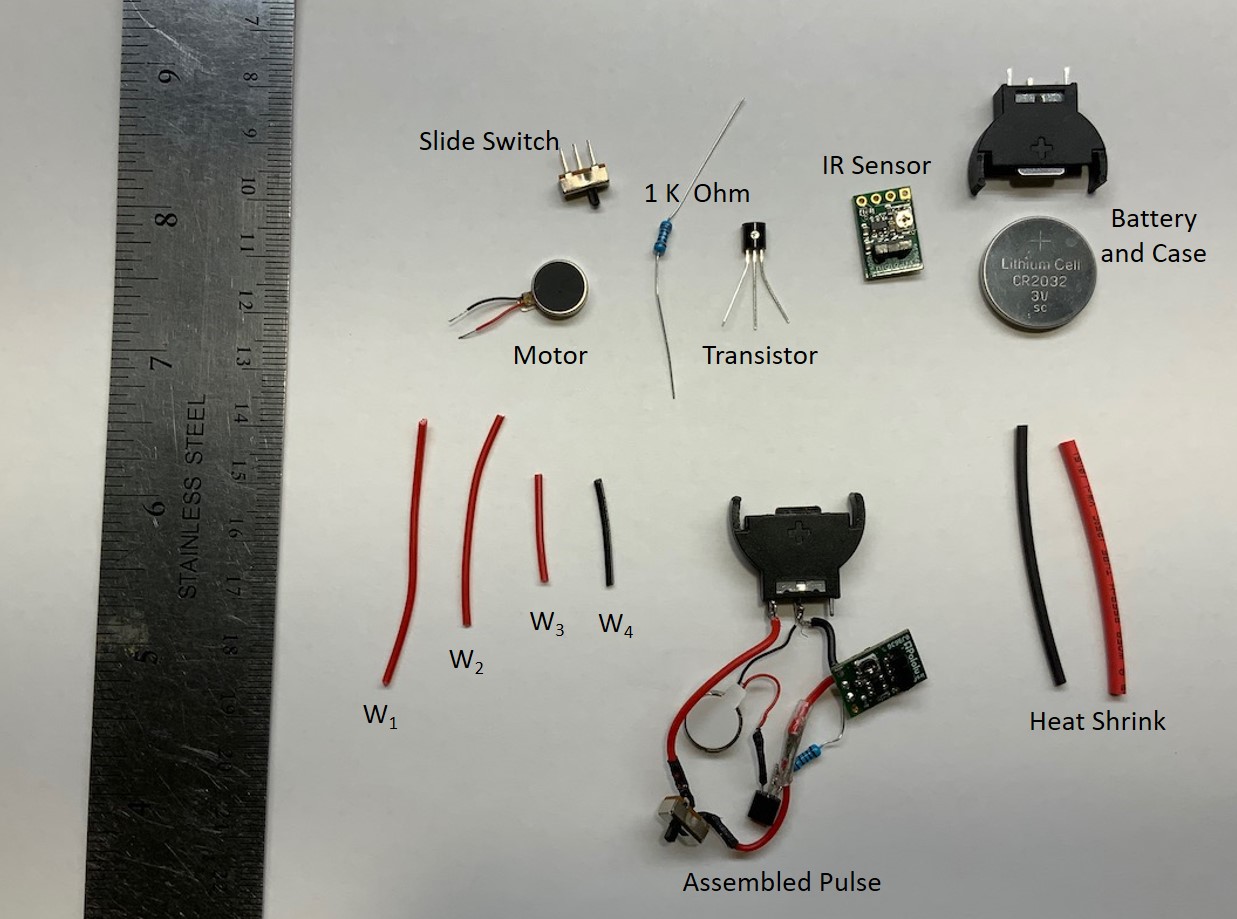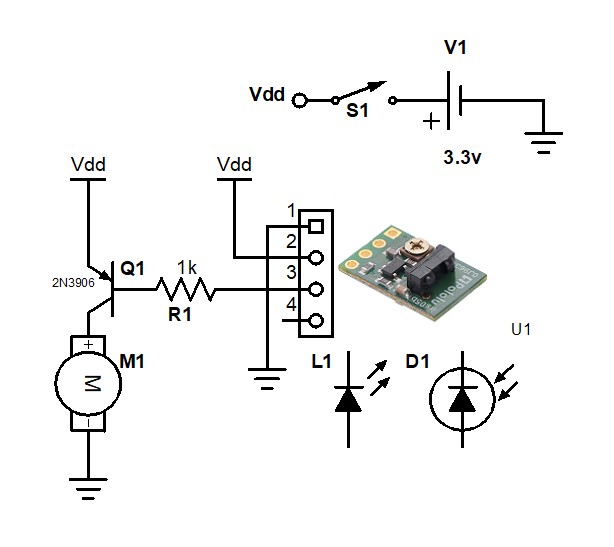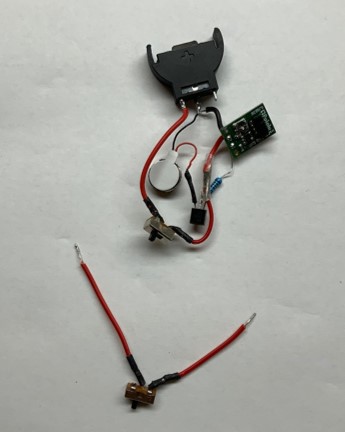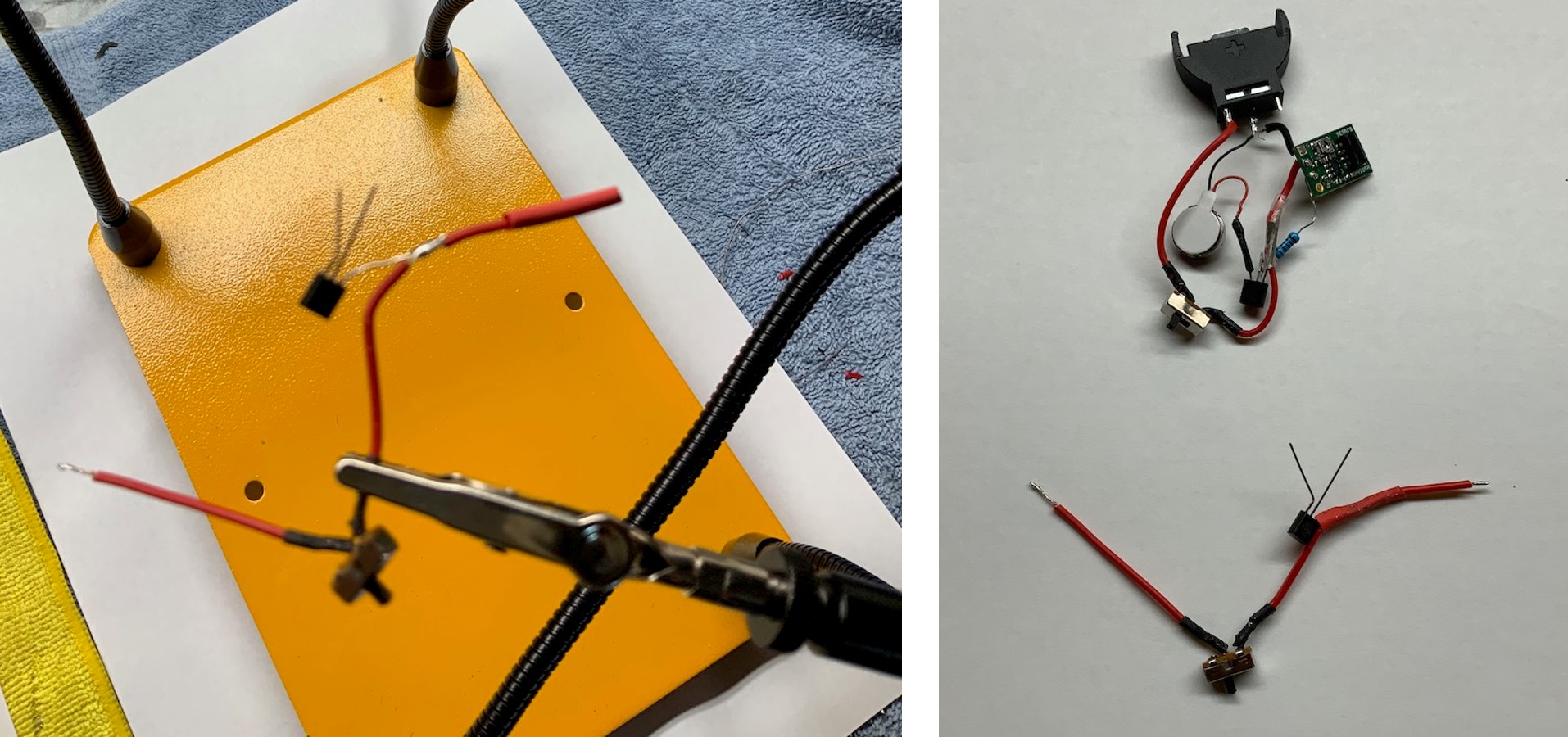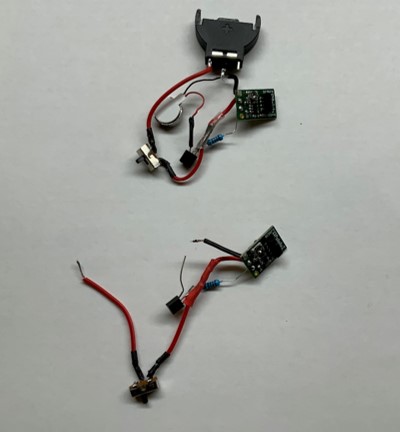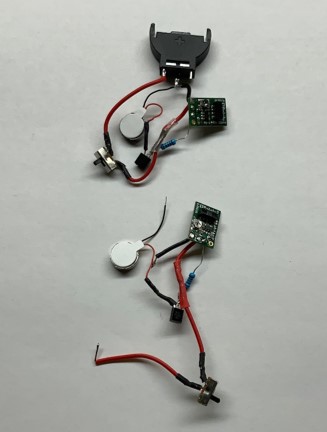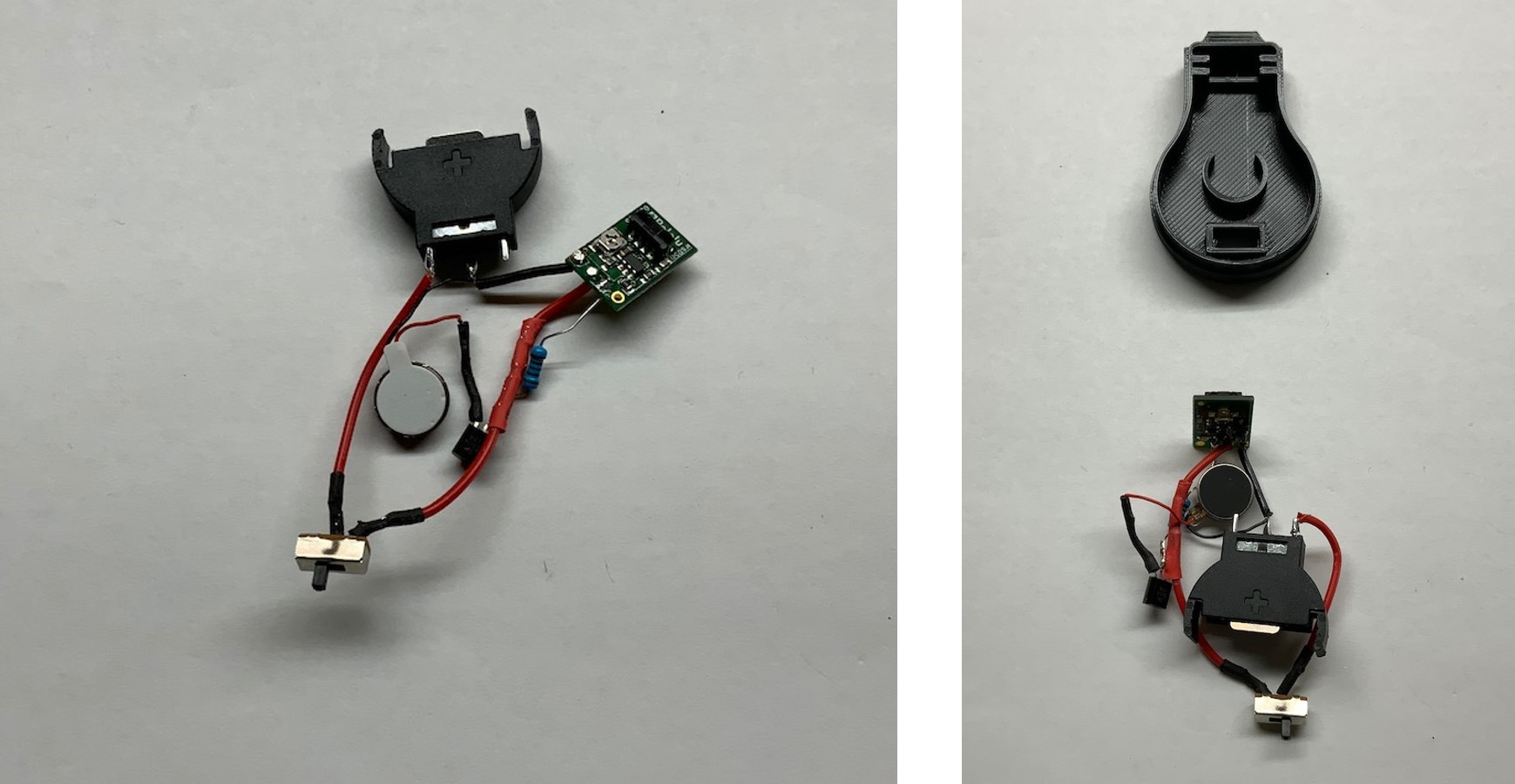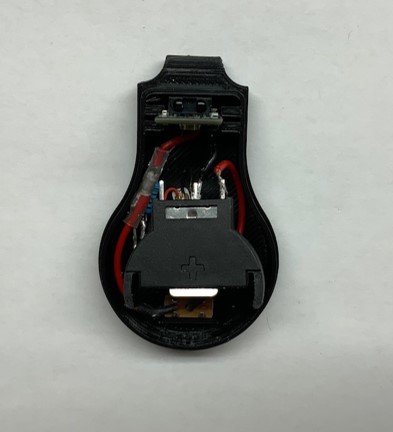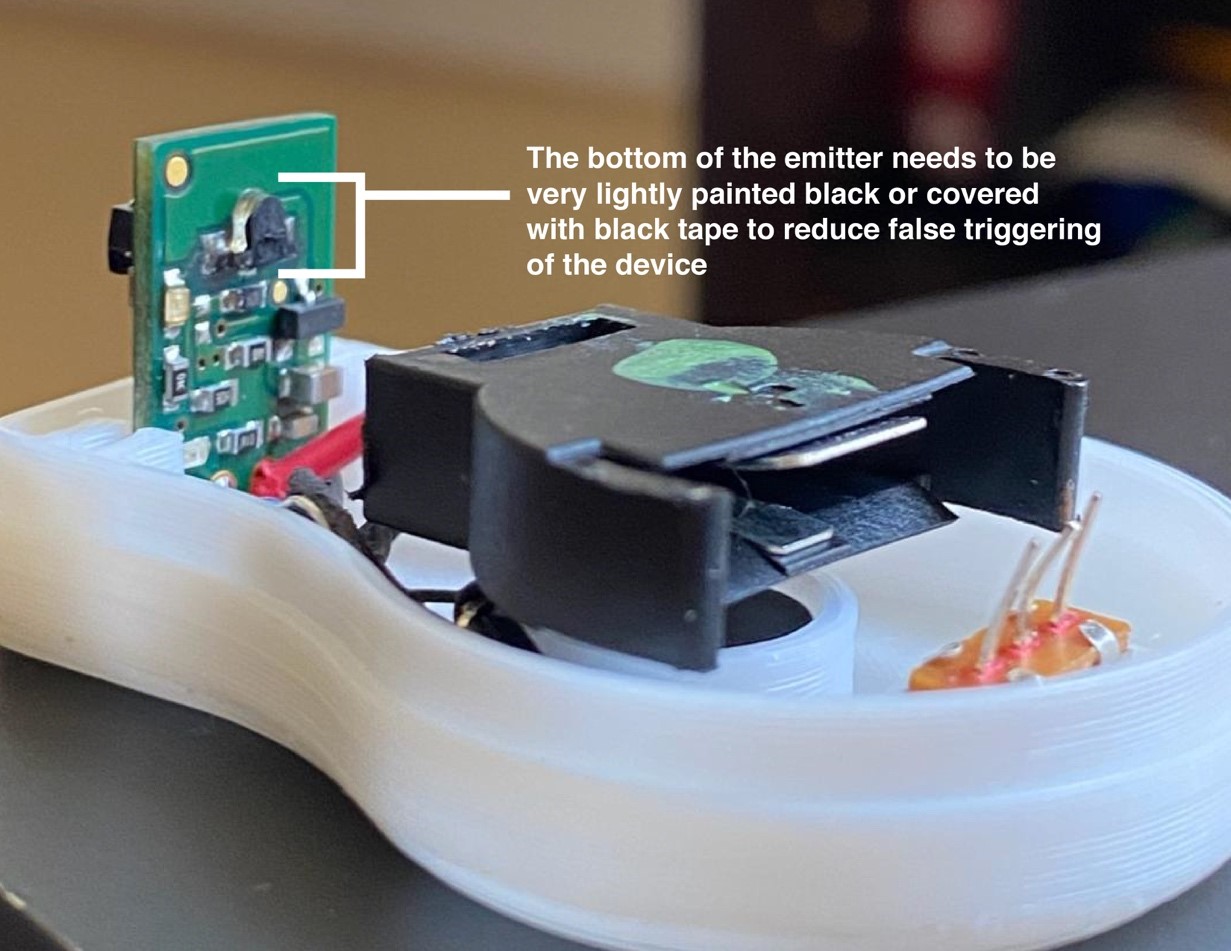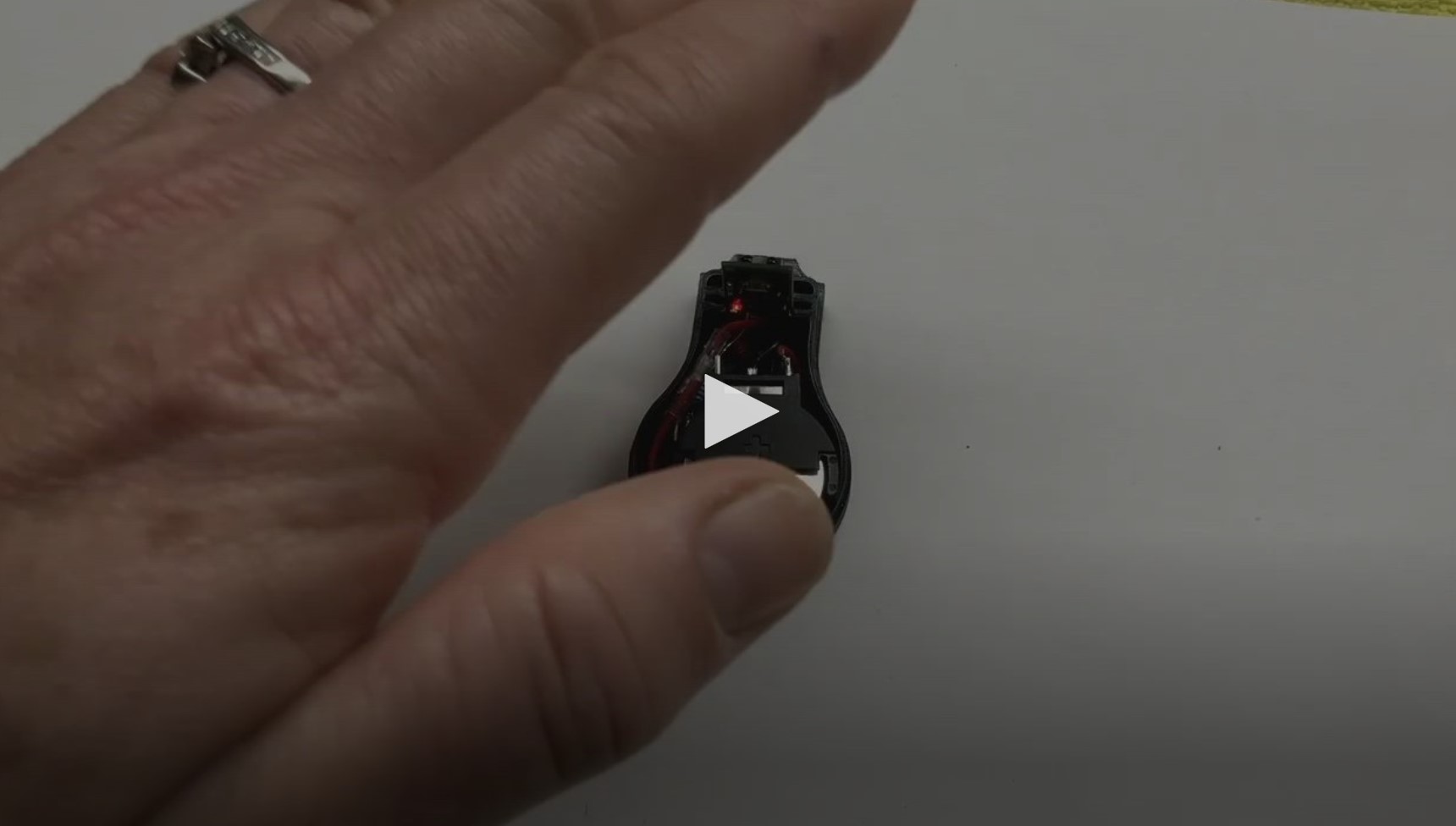nasa-jpl / Pulse
Projects that are alternatives of or similar to Pulse
PULSE - a pendant to warn you when you touch your face
Here’s the tool and equipment list, materials, circuit diagram and assembly instructions. The ability to solder is necessary to assemble the PULSE pendant. Except for the IR sensor unit, the parts are generic and can be purchased broadly. Example links for purchasing these parts are shown.
Table of Contents
Tools and equipment needed
-
Home-class 3D Printer (PLA material or other as user option; you can also send files out for on-line order)
-
Soldering Iron and solder
-
Wire Stripper
-
Helping Hands Stand to Assist Soldering (optional)
Materials Required and links for ordering
-
IR Sensor unit: Pololu 38 kHz IR Proximity Sensor Order Here or equivalent in function and size determined by CAD here
-
PNP Transistor: 2N3906 or equivalent: Order Here or equivalent in function
-
1 K Ohm standard resistor: Order Here or equivalent in function
-
Slide Switch to fit case: Order Here or equivalent in function and size determined by CAD here
-
Vibrating Motor to fit case Order 10x2.0mm Vibrating Motor Here or Order 10x3.4mm Vibrating Motor Here
-
W1 – 5 cm; W2 – 4 cm; W3 – 2 cm; W4 – 2 cm; 22 Gage Wire
-
Heat shrink tubing to cover leads: Order Here or equivalent to cover a 2.5mm diameter wire
-
Battery Holder: Order Here or equivalent in function and size determined by CAD here
-
3V CR2032 Coin Battery: Order Here or equivalent in function
-
Dark colored paint (i.e., acrylic, oil, nail polish etc.) such as black, navy blue, dark green, etc. (Required only when utilizing non-black colored case material)
Pendant Case
The PULSE pendant case was designed to hold the existing parts. Other pendant designs can be created as desired as long as the IR sensor will fit and has a clear view to the front of the pendant.
If not using black material for case, the bottom of the IR emitter will need to be painted black or covered with black electrical tape to absorb any light. If this is not done, the sensor will read false motion and vibrate continuously. Only the flat bottom, do not cover the whole LED.
Circuit Diagram
Central to the design of the PULSE pendant is the infrared sensor unit (U1 in the diagram) that provides a high (~3 V) output signal to pin 3 by default, and drops low (~1 V) when the LED detector (D1) receives a signal indicating your hand (or other reflecting object) is in front of the pendant. L1 is the radiating infrared LED. When pin 3 goes low, it powers the PNP transistor (Q1) to energize the motor (M1) causing it to vibrate and the pendant to pulse. V1 is the 3 V battery in the case and S1 is the slide switch. Pin 4 on the infrared sensor is an enable input and is not used.
Assembly of the PULSE pendant
- Wire W1 solders to the center pin of the switch and wire W2 solders to an end pin of the switch. The third pin on the switch can be clipped off – it is not used. Heat shrink covers the pins. This picture shows the completed switch next to an assembled PULSE pendant
- The other end of W2 solders to the emitter pin of the transistor as well as wire W3. (This is a three-way connection – wires W2, W3 and the transistor emitter pin are connected together; this is the positive voltage). The picture shows the use of a helping hands to perform the soldering of three leads, and then the end result. Heat shrink is used to cover the lead at the transistor.
-
The other end of wire W3 then attaches to pin 2 of the IR sensor
-
Wire W4 (ground), attaches to pin 1 of the IR sensor
-
The 1 K Ohm standard resistor attaches to the middle or base pin of the transistor. Use heat shrink to cover the connection
-
The 1 K Ohm standard resistor attaches to pin 3 of the IR sensor. This picture shows the assembly so far
- The red wire of the vibrating motor solders to the collector pin of the transistor. Use heat shrink to cover the connection
- The black wire of the vibrating motor solders to the ground port of the battery case (jointly with W4). The other end of W1 solders to the positive pin of the battery holder. This picture shows the completed assembly and the wires folded for insertion into the bottom case
-
The motor and switch snap into the case base
-
The IR sensor slides into the case base rails
-
The electronics are gently tucked into the case base
- Using a dark colored paint (i.e., acrylic, oil, nail polish etc.) such as black, navy blue, dark green, etc., lightly paint over the emitter as shown in the image below. Using a dark colored pen or marker will not work the same as paint.
- With the electronics in the case base, the battery can be installed, the switch can be set on; move your hand in front of the IR sensor and the red LED on the sensor board will light and the case will PULSE!
- Install the top case. Attach a necklace of your choice and PULSE is complete
Frequently Asked Questions - FAQ's
-
Q: How is battery life / current draw with the current design? I have trichotillomania and this would be a fantastic help for me and many other sufferers. However it would mean we would have to wear it all day, every day to kick the habit. From an environmental perspective I imagine we would need to change this to take a small rechargeable battery (possibly charge circuitry too) to result in less batteries going to landfill/recycling centres.
A: The infrared sensor is the largest current draw and at continuous operation runs the battery down over a day or two depending on use. We are looking at a Version 2 that would include a rechargeable battery. Please look at the Version 2 FAQ question for changes we are considering.
-
Q: I assume painting the IR sensor is to reduce the gain a bit? Since the high brightness version is backordered, would the low brightness version work? The range is 12 inches. Perhaps using a shorter lanyard. Or we could find another source, which would have us altering the print job.
A: We paint the bottom of infrared sensor to limit stray transmitted IR light from bouncing back to the IR receiver. The pendant case color effects this quite a bit - for example a black case does not need the IR transmittor painted. The low-brightness version does work but with reduced range.
-
Q: Can we order these already built?
A: We are seeking production houses that would be interested in producing PULSE.
-
Q: Are you planning on making a version 2?
A: We Are. Functionality for Pulse Version 2 will have a Printed Circuit Board (PCB) holding all electronics. Standard form factor of PCB with infrared (IR) sensor and switch having standard alignment to pendant case
Acknowledgements
In early March of 2020, it was becoming quite apparent that the pandemic has reached the United States. We, like so many other countries, would have to partake in precautionary methods to protect ourselves from contracting a novel virus that was affecting the world in unrecognizable ways.
With little information available, we turned to the CDC for guidance. They provide the general public with a clear list of tasks to help prevent infection, one of which was advising us not to touch our faces. As the news unfolded and the warnings heightened, we found ourselves immersed in discussions related to the topic, most of which consisted of commiserating on the laborious task of not touching our face. During a Monday morning tag-up, and as our team members revealed how often they touch their face, Tom Cwik, the engineer, and Faith Oftadeh, the designer, suddenly realized that a simple wearable device may help with this problematic subconscious behavior.
Immediately, we started pulling together a list of inexpensive and easily accessible parts, sketching out ideas, and once the concept seemed plausible, we agreed to pursue it all while JPL closed and transitioned to telework. Within days, we found ourselves adjusting to a new way of living. While working from home, managing childcare, and attempting to do “business as usual,” we continued developing PULSE via text and Facetime during the nights and weekends. When it came to creating a proper casing for the pendant, Dan Kolenz joined the team as the CAD mechanical designer. After prototyping and working through sluggish online parts ordering, coupled with frequent late-night texting, facetime sessions, and 3D printing in the garage, we managed to create an operating prototype.
Dave Gallagher, JPL’s Associate Lab Director provided significant encouragement and JPL support to move forward. Rafael Martinez paved the way from within JPL to allow us to release PULSE and bring it to where it is today. Lisa Harbottle volunteered to demo and model the pendant, Gary Bolotin gave a review of the electronics, Kristy Kawasaki designed the website, and Olivia Cwik was key to soldering and added to the Readme.
Our goal was to create a simple device that can help minimize the spread of a virus. We also hope that the public can further develop this concept. As we return to our office spaces and attempt to integrate back into society, we believe that PULSE may help others stay as healthy as possible.
In The Press
- Radio interview with KNX LA 1070 AM
- Featured on KTLA channel 5 morning news and ABC LA channel 7 June 30, 2020
- Live via zoom on Fox channel 26 Morning Show, Houston, Wednesday July 1, 2020
- Techcrunch
- USATODAY
- Mashable
- Daily Mail
- CNet
- UK News (United Kingdom)
- Engadget
- GovTech
- SlashGear
- TheDenverChannel
- TechTimes
- TrendHunter
- Cosmopolitan
- Futurism
- NewsMax
- Houston Chronicle
- MSN
- CoronaCOVID19
- PublicReleases
- PasadenaNow
- NewsErector
- InceptiveMind
- 3DPrintingDesign
- FirstPost
- 8NewsNow
- Telecino (Spain)
- Tivi (Finland)
- GCN
- India Times (India)
- Yahoo! news
- Tribune (Pakistan)
- Groupo Fórmula (Mexico)
- El Tiempo (Colombia)
Disclaimer
Disclaimer: The designs herein have not been reviewed, cleared, or approved by FDA or other regulatory authority, nor have they received Coronavirus Disease 2019 (COVID-19) Emergency Use Authorizations for Medical Devices. Neither California Institute of Technology (including the Jet Propulsion Laboratory)("Caltech") nor its employees or agents provide any representation or warranty, express or implied, for fitness for a particular purpose, safety, efficacy, or non-infringement of any third party intellectual property rights. Caltech offers these device designs in good faith to help healthcare providers and others prevent the spread of and treat patients with COVID-19. Physicians and other healthcare providers bear full responsibility to convey warnings and obtain patients' informed consent.


